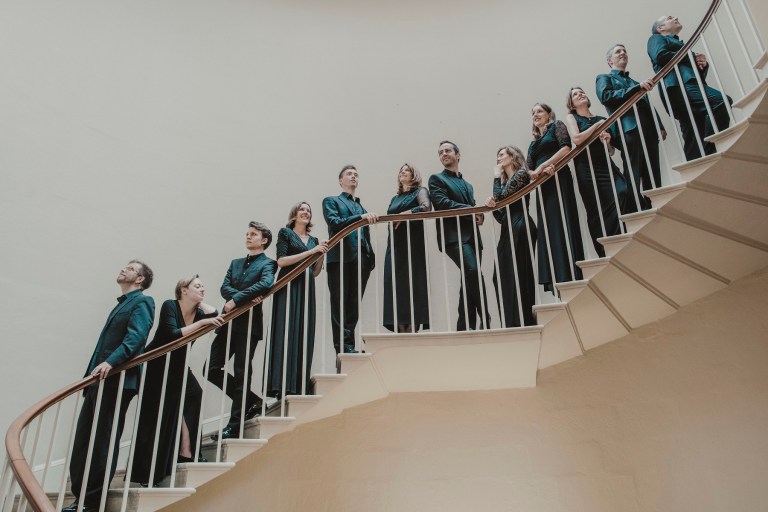
THE 2020 York Early Music Christmas Festival went out with a splurge of concerts over its last weekend.
Your reviewer caught two of the four on the final day. Spiritato! was the largest ensemble to appear at the festival, 18 period-style players, who concentrated on Bach and his contemporary Johann Friedrich Fasch in The Leipzig Legacy.
Had he not been born directly in Bach’s shadow, Fasch would surely be better known. We heard at once, in the opening Concerto in D, how Fasch was already anticipating the classical shapes and sounds that were to feature in Haydn’s earlier symphonies.
There were exciting trumpets in the opening Allegro and delightful solos from violin and oboe in the finale: enough meat on these bones, indeed, to make further exploration of Fasch an exciting prospect.
His Quartetto in D minor, dating from about 1750, was marginally less exciting, but well above run-of-the-mill Baroque, gracefully delivered in its slow movements, with contrastingly crisp counterpoint in the Allegros.
Spiritato! was led from her violin by Kinga Ujszászi, who came into her own in Bach’s Sinfonia in D, where her effortless panache was breath-taking. But elsewhere too, she led by example, sustaining a real sense of dance through both Bach’s Second and Third Suites.
The Second, in B minor, believed to be the last of the four to be written, was given here in its earliest version for strings alone. Here the sound was a touch top-heavy, needing an extra cello or two for good balance.
The Third Suite, in D major, was probably much earlier, written at Cöthen (where Bach was succeeded as Kapellmeister by Fasch) in 1718. Apart from its famous Air, caressed here by strings alone, the Gavottes had a gentle lilt and the Gigue made a triumphant finale. Spiritato’s palpable enjoyment had proved infectious throughout.
The festival closed with the 12-voice ensemble Stile Antico, in an appearance at the unusual but most welcome hour of 5pm. Here we were back to purely Christmas repertory, mimicking Nine Lessons and Carols with nine Renaissance works, each preceded by a contemporary reading, in A Renaissance Christmas.
My heart usually sinks when I see that musicians are doing their own readings: few manage it with much prowess, let alone clarity. Stile Antico largely proved me wrong; these well exceeded expectation. There were two poems each from John Donne and George Herbert.
Robert Southwell’s The Burning Babe was another excellent choice, as was Emilia Lanier’s Eve’s Apologie. But the laurels went to a sermon by Lancelot Andrewes, its wit and wisdom about the Magi (including “a cold coming they had of it”) delivered here with supreme clarity. None of the readers was identified.
The conductor-less choir was arranged in two semi-circles, eight on the outside, four inside, socially distanced. This meant that, for the first time that I recall, it was possible to spot one singer keeping time with a gentle nod.
Needless to say, ensemble remained impeccable, matched by tuning that surely heaven will not better. The sopranos were particularly stunning. I recall just one occasion when a very high entry was slightly misjudged, though instantly rectified.
The tone of the evening was nicely set by an extract from the Piae Cantiones of 1582, that Finnish collection rediscovered by our man in Helsinki in the early 19th century.
Victoria was the only composer to feature twice, once with an eight-voice Agnus Dei, once with a gorgeous O Magnum Mysterium, partnering Donne’s Nativity. In between these two came the starker harmonies of a graceful Ave Maria by Des Prez, alongside Donne’s Annunciation, another clever pairing. Byrd’s Rorate Coeli had reminded us of his matchless counterpoint.
A very peppy Angelus Ad Pastores by a Ferrara nun, Raffaella Aleotti, in madrigal style, reminded us of how many such ladies are only now being brought to light, not before time. Guerrero’s villancico – nowadays synonymous with Christmas carol – A Un Niño Llorandowas cleverly shaped by five soloists.
It remained for a beautifully sustained account of John Sheppard’s Verbum Caro Factum Est, which was written for Christmas matins, to remind us of the reason for the festival. If you’ve never heard Stile Antico, make a beeline for them: you won’t be disappointed.
Review by Martin Dreyer
Both concerts are still available to buy online from the York Christmas At Home programme at ncem.co.uk until December 21 to watch on demand until January 6 2021.
